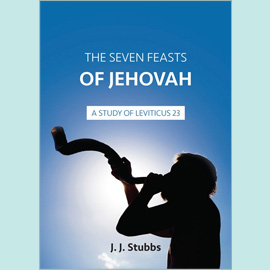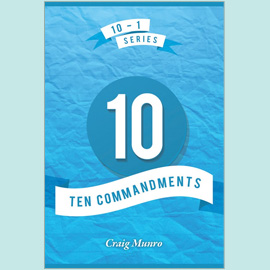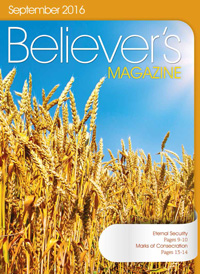It was on this page, last month, that comment was made concerning the 57-year period that lies between Ezra chapters 6 and 7, in which interlude the events of the Book of Esther took place. Another interesting 'hidden gap' lies between verses 11 and 12 of Matthew chapter 4, verses 13 and 14 of Mark 1, and verses 13 and 14 of Luke 4. Almost all of the first year of the Lord's public ministry, most of it spent in Judaea, took place in the time gap between these verses yet, inspired by the Holy Spirit, the synoptic Gospel writers have not recorded it. Indeed, were it not for the Gospel of John, we would have no knowledge of the Lord's early Judaean ministry at all. The section John 1.19 to 4.43 supplies the narrative omitted by the other Gospel writers, and we thus know of the remarkable conversations the Lord had with Nathanael, His own mother Mary, Nicodemus, the disciples of John the Baptist, and the woman of Samaria. If we only had the first three Gospels, we would never doubt that the Lord's public ministry began in Galilee, and continued there, immediately after His time of testing in the wilderness had ended. Again, the first three Gospels record (prior to His public ministry) that the Lord Jesus is the Son of God (Mt 4.3, 6; Mk 1.1; Lk 1.35, 4.3, 9), but John's account of the 'hidden gap' gives the first chronological references to the Lord Jesus calling Himself the Son of Man, first to Nathanael (1.51), and then to Nicodemus (3.13-14).
Recognising that the Author of these Scriptures has a purpose in so designing the Gospel records, we reverently enquire as to what it might be. Why would significant events in the early ministry of the Lord Jesus only be revealed in the last Gospel to be written? (It is generally agreed that the order of the Gospels in the New Testament is the order in which they were written, and the first three were probably completed within 20 years of the Lord's ascension to Heaven. John's Gospel was not written until about 50, or even 60, years had passed since the Lord returned to the Father.) The later time of writing is significant, because we know from John's epistles that the Person of Christ, especially His real humanity, was being rigorously attacked at the time John wrote his Gospel, his epistles and the Book of Revelation. Guided by the Spirit, John selected particular signs from the Lord's ministry "that ye might believe that Jesus is the Christ, the Son of God; and that believing ye might have life through his name" (20.31).
The narrative of the synoptic writers moves from the Lord's wilderness experience to His ministry in Galilee. They show the fitness of the sinless and dependent Man to undertake the work of salvation. They all record the glory of His submission to the Father. When John wrote his Gospel, that Man had been back in Heaven for some 50 years or so. Was He still "the Christ"? Would He yet be to Israel all that the Scriptures had promised? John wrote to give that assurance, and instead of showing the glory of the submissive Man in the wilderness, he showed the glory of the supreme Man who turned the water into wine at the marriage feast: "This beginning of miracles did Jesus in Cana of Galilee, and manifested forth his glory" (Jn 2.11). In the wilderness, when the whisper came 'there is no bread', the Lord refused to transform the stones. At the wedding feast, when the whisper came 'there is no wine', He provided an abundance of the best wine they had tasted. The one showed the glory of His submission, the other the glory of His supremacy. In the wilderness, wracked with hunger and thirst, the submissive Man knew the ministry of angels (Mt 4.11). At the well, having ministered to the spiritually thirsty woman, the supreme Man said to His disciples "I have meat to eat that ye know not of … My meat is to do the will of him that sent me [the glory of His submission], and to finish his work [the glory of His supremacy]" (Jn 4.32, 34). And, in days soon to come, finish it He will!









